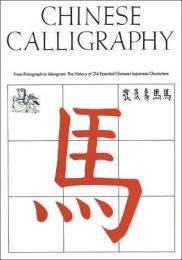At the heart of this book are twenty-eight real-life animals and the myths and literature, paintings, drawings, textiles and ceramics they have inspired some of the most celebrated Japanese artists and writers to create
Since the dawn of Japanese folklore and religion, the Japanese soul has cultivated a special connection with nature and wildlife, in part due to the natural abundance of the Japanese archipelago. Every animal, from the frightening crow to the sublime crane, is sacred, occupying a central place in Japanese mythology, literature, arts, and crafts. In this text-rich art book, readers will find twenty-eight real-life animals, including the fox, frog, cat, monkey, and firefly, described in texts combining haikus, tales and anecdotes from everyday life and illustrated with objects produced by the some of the most celebrated Japanese artists and craftsmen.
Readers will see just how central animals -from the most fleeting to the most majestic, from the wildest to the most domesticated -are to Japanese legends and literature but also in the latest manga and animated films. In some cases, the animals are transformed and endowed with human attributes; in others, through a representative selection of Japanese art -paintings, prints, fashion and common Japanese objects such as netsuke (miniature sculptures)- they appear lovingly portrayed in their natural element: typical animals of the countryside, mountains, forests, rivers and sea, and even today's cities. While most of the animals in this Japanese bestiary are good omens, even ones a tad mischievous, downright evil or uniquely sacred, such as the sika deer or the crane, all are invested with strong symbolism and have become extremely popular in a country where everything is ephemeral and transient, yet everything remains.
Japanese Bestiary is an ideal book for anyone interested in Japanese drawing and painting, animal illustrations and wildlife art and literature.
About the Authors:
Nelly Delay, art historian, graduate of the Ecole du Louvre high school, was an art critic at Combat – founded in 1941 as a clandestine newspaper – and in various Swiss and Italian magazines before specializing, since 1963, in the study of ancient Japanese art. She organized Japanese art events in Paris from 1974 to 1984, for which she published texts on little-explored subjects and books on old Japanese drawings and paintings and the influence of Japanese on Western Art. Since 1989, she has devoted herself to publications and conferences within the framework of different cultural organizations and the OECD. Two of her many titles are available in English: "The Art and Culture of Japan" and "Japan: The Fleeting Spirit".
Dominique Ruspoli is a writer and photographer. Doctor (PhD) of Philosophy (by Paris 1 Pantheon-Sorbonne University, France) specialized on the aesthetics of western lough, she became lecturer on written communication and psychology at the EISEA (Graduate School of Engineering in Ivry, France). Dominique Ruspoli has addressed in her writings subjects as different as psychodrama, the humorous drawing, the Etruscans, Venice or the Lascaux cave, and has published also books on the Japanese artists Hokusai, Hiroshige and Kyosai. She is, since 2000, member of the College of Pataphysics - The Science of Imaginary Solutions, founded after the principles described by the symbolist writer Alfred Jarry.














